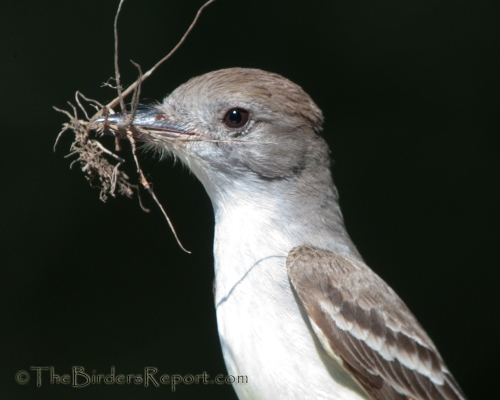 Ash-throated Flycatcher (Myiarchus cinerascens) photos by Larry Jordan
Ash-throated Flycatcher (Myiarchus cinerascens) photos by Larry Jordan
I know the long days of summer are nearly upon us when I hear the enchanting song of the Ash-throated Flycatcher (Myiarchus cinerascens) in my yard.
[audio:https://thebirdersreport.com/audio/ATF.mp3]
I noticed this pair bringing nesting material to a nest box on one of my bluebird trails a couple of weeks ago. The Ash=throated Flycatcher is one of those birds that are usually heard before they are seen. As a matter of fact, it is sometimes hard to locate them even after hearing their call for some reason, even though they often perch in one location for long periods of time. Click on photos for full sized images.
Ash-throated Flycatchers are cavity nesters that readily accept man-made nest boxes. They use the same size box as my Western Bluebirds with a 1 1/2″ entrance hole. They usually lay four or five smooth, creamy white or ivory, slightly glossy eggs with elongated blotches in purplish-red, reddish-brown, lilac or gray.
The breeding pairs on my trails have always laid four eggs, so this clutch is not yet complete.
Ash-throated Flycatchers are found across much of western North America in habitats varying from desert scrub to riparian forest. They can tolerate the high temperatures we get in the Sacramento Valley of California and other arid locations because they don’t need to drink water. This map, courtesy of Birds of North America Online, shows their distribution.
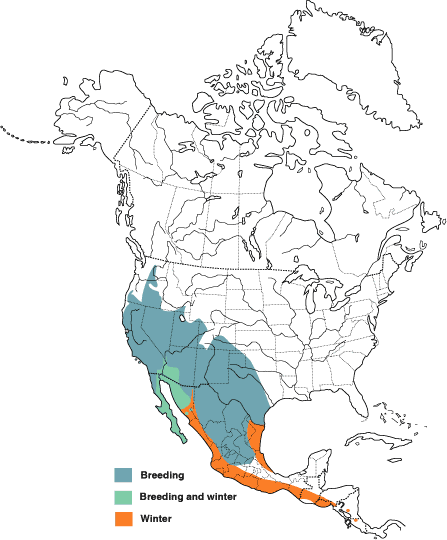
These graceful flycatchers are highly opportunistic nesters and will use almost any natural or artificial cavity, size permitting, that are at least a foot above ground. Presumably, where cavity availability is limited or competition for cavities is high, Ash-throated Flycatchers will immediately occupy cavities as soon as they are vacated by other species1.
I took my favorite photo to date of this beautiful bird after finding a pair nesting in a natural cavity of a large oak tree at Turtle Bay. He or she had captured a praying mantis and was about to enter the nest cavity to feed the chicks.
If you like photographs of birds, you need to check out Bird Photography Weekly and then join in the fun by submitting your own bird photos!
References: 1Birds of North America Online

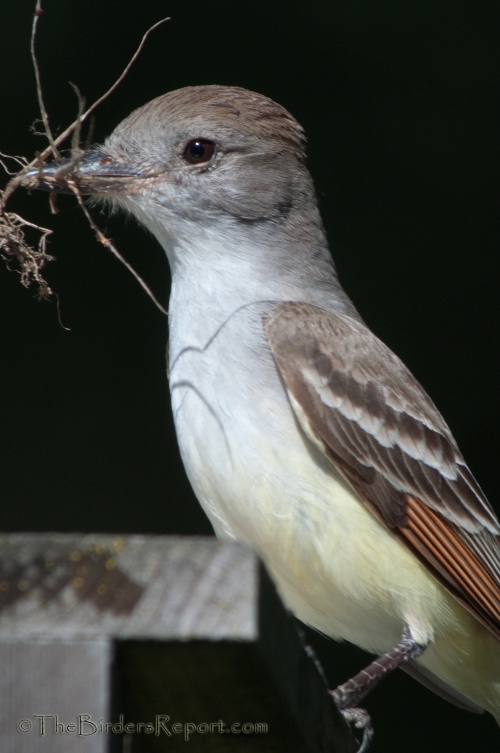
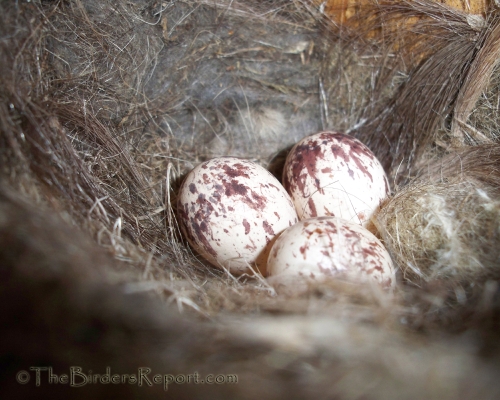
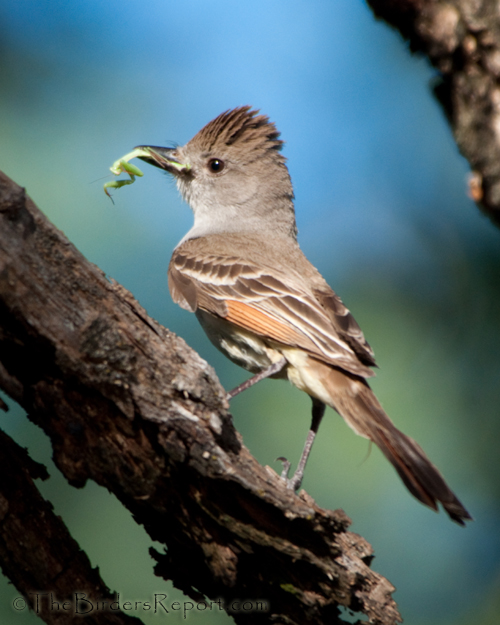








Comments on this entry are closed.
that last shot is wonderful! flycatchers are such neat birds – love those ‘whiskers’ around their mouth area.
Great detail on all the photos and the last one with the food for the chicks is especially good.
…the blues in your favorite photo are beautiful. I love that shot. Capturing him with the mantis leg is awesome!
Awesome photo with the mantis! Those eggs are beautiful too.
Another great set of photos, Larry!
Happy Birthday!
@TexWisGirl thank you. The Ash-throated Flycatcher is (obviously) one of my favorite song birds
@Mick thank you very much
@Kelly thanks, I really like that shot!
@Dawn thanks much
@Bob thank you for the birthday wishes too 😉
Your map explains why I didn’t catch up with this species in Canada Larry. Interesting you say they don’t need to drink water – quite specialised then and I guess they get their liquids from insects? Nice close-ups as ever but what size are they, Great-crested Flycatcher or Alder/Willow size?
@Phil the Ash-throated Flycatcher does get their liquids from both insects (the majority of their diet) and fruit during fall migration and winter. They are just slightly smaller than the Great-crested Flycatcher
what an adorable bird. I think I fell in love. Well, I would not mind having it in Sweden. 🙂
If you go o CR you will not regret it. But it is hard work. I discovered a lot of muscles I did not know I had. 🙂
How nice to host a flycatcher. We have Great-crested Flycatchers in the area and I look forward to the day they use my bluebird box!
only good info & photos of this bird I have been able to find. thanks. I have a pair in a nest in a cottonwood tree. Has lots of pieces of paper in nest